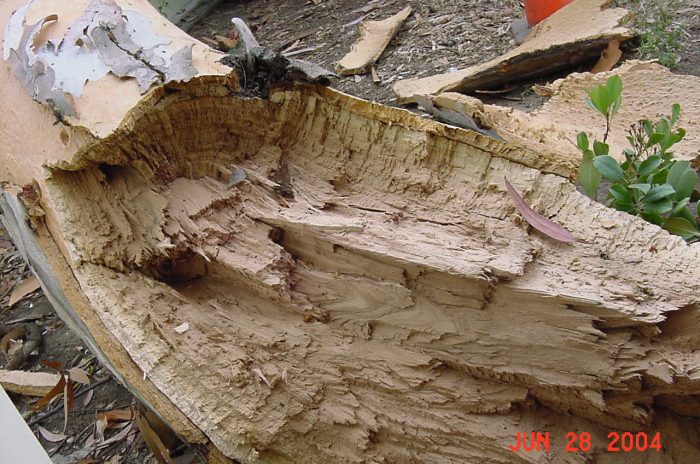The “Glossary of Arboricultural Terms” (ISA, 2014) defines “sudden branch drop” as follows:
“Sudden, unanticipated failure of a tree branch with little or no discernable defect; often associated with long, horizontal branches and warm temperatures.”
This phenomenom is also called “summer limb drop”. I think that the above definition leaves a lot to the imagination, especially for the layperson. Large limbs sometimes fall from trees in a predictable way that someone trained in seeing and evaluating tree defects (a trained arborist) might anticipate and move to prevent. But sometimes, large limbs fall when that outcome would be much less predictable. Often (usually) these failures fit the following criteria:
- Very warm weather
- There is no defect that the failure can be attributed to:
- No wound near the point of failure that could have contributed
- No decay associated with the break
- No other discernable defect near the break site
- The limb did not break away at the point of attachment (the location where the limb was connected to the tree)
- There is no weather event (other than perhaps high temperature) that contributes to the failure.
There are ways to assess tree limbs that could help identify limbs that might experience such a failure. As the definition above makes clear, such failures are often associated with long horizontal limbs. I would add that these limbs often appear “heavy” and over-weighted, especially towards the end of the limb.
We frequently suggest end weight reduction in limbs with this appearance. If this is done properly, it may reduce the likelihood of summer limb drop without damaging the tree appreciably.
I have been asked many questions about this recently. Among others:
- “Does it look like [the tree] had been trimmed or maintained properly? The remaining crotch [on a tree shown in a photo] looks rather like it had been topped repeatedly…” While topping does lead to defects that can result in limb failure, any failure associated with topping cuts would, by definition, not be summer limb drop since it would be associated with a defect.
- Similarly, “But if the reason for failure is unknown, how can we be sure it wasn’t because of previous topping?” When a limb fails, a trained arborist can detect old pruning wounds, decay, topping cuts, etc. that are associated with that failure. If any of those things are associated with the failure upon an arborist’s inspection, the failure would by definition not be summer limb drop since it would be associated with a defect.
- “Don’t trees in a natural setting also ‘fail’ now and then? I’m thinking of trees seen in the national forest [that] drop large limbs.” Yes! Indeed that is true. And it is possible that some of those failures might be associated with summer limb drop. But we seldom get to evaluate such failures soon enough after they happen to determine the cause. And…many limbs that fall in the forest are the result of heavy snow load, high winds, death of the limb before falling, etc.
Notice no apparent defect in this Eucalyptus break, and the limb did not break at the point of attachment. This is a typical “summer limb drop”.

